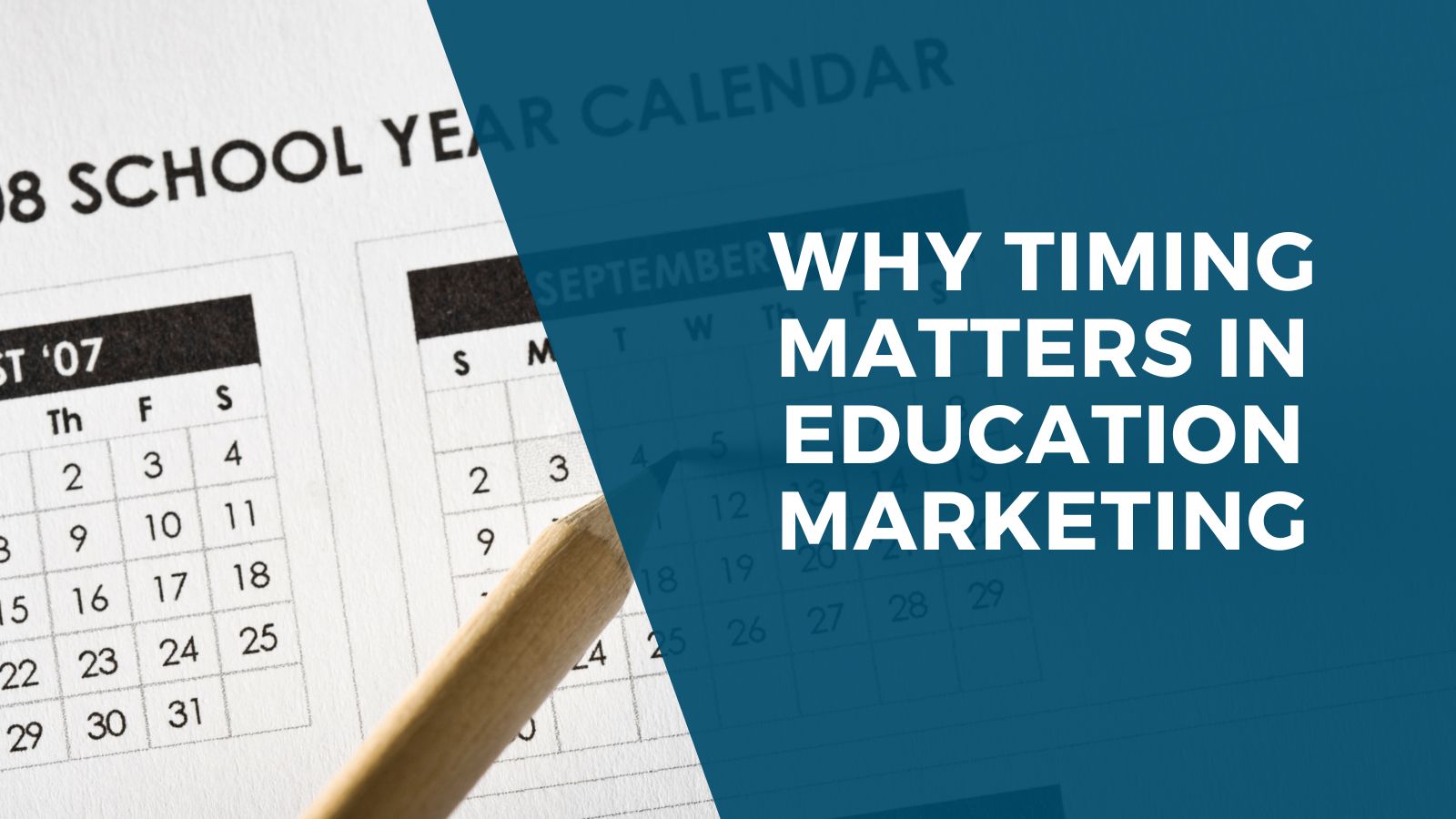When it comes to priorities and schedules, teachers have seasonal rhythms that differ from many of us who no longer live by the academic calendar. Whether your education marketing goals are focused on classroom essentials, teacher resources, or student learning materials, knowing how to position your brand as the academic calendar shifts will allow you to stay relevant all year long.
In essence, timing is everything when it comes to marketing your products to educators. In this article, we will discuss the school year cycle and the academic calendar, how to market for the season, and when you can maximize your impact on educators.
The School Year Cycle
Overview of the Academic Calendar and Seasonal Shifts
Although school start dates vary across the country, the school year typically runs from August/September to May/June. Most school districts then divide the year up into two semesters, three trimesters, or four quarters. During that time, there are major breaks and transitions that influence educator behavior. Some key phases you’ll likely recognize, for instance, include back-to-school season, holiday breaks, spring testing, and summer planning. Understanding how to adapt your brand’s education marketing efforts to these school-specific phases of the year will help you avoid outreach fatigue and keep your campaigns fresh and engaging.
Things that resonate in August might fall flat in March. For example, during early fall, educators are high energy as they plan and settle into routines. By the time winter break is over, they are already starting to think about end-of-year testing and may begin to feel burnt out as spring progresses. Understanding this rhythm helps your brand send messages that match educators’ current mindset, bandwidth, and needs.
Engagement Timeframes for Education Marketing
High-Engagement Windows
- Late summer (July-August): Educators are actively seeking new resources, ideas, and tools for the new year.
- Early spring (February-March): Early planning for the next year begins, making it a good time for curriculum outreach. Post-holiday season buying behavior also allows for brands to capitalize on the market.
- Mid-fall (October-November): Educators tend to be more receptive to promotional content, especially curriculum messaging, once the back-to-school rush dies down.
Low-Engagement Periods
- Testing season (March-April): Heightened stress levels and teacher burn-out make this a bad time for heavy outreach.
- Winter holidays (late November-December): Educators are traveling or spending time with their families and may stray away from too much school content.
- Summer break (June-July): When school is out for the summer, educators tend to be focused on other aspects of their lives and are therefore less responsive to outreach.
Marketing for the Season
Educators are focused on planning testing and wrapping up the year, while districts begin evaluating tools for future use. This is a great time to share success stories and data-driven insights that show how your brand can support schools during high-pressure seasons.
Teachers and admins are more receptive to messages about classroom setup, school culture, and PD. As educators look to the start of a new school year, they also tend to be more open to discounts and specials. With conferences in full swing and purchasing decisions underway, we’d recommend sharing how you can make their back-to-school prep easier.
Teachers are settling into their routines and integrating curriculum. There is less time for new tools, but they are open to support that enhances what is already being used. During this season, position your product as a helpful addition as opposed to a disruption.
Districts are building budgets and making strategic decisions. Meanwhile, teachers are looking for solutions to challenges they are currently facing. You may try showing your brand’s impact by offering free trials, case studies, and solutions that help them plan.
Understanding the Educator Mindset
Like anything else, educators’ mindsets fluctuate throughout the year based on their current stress levels. It is shaped by a blend of emotional, logistical, and institutional pressures that shift throughout the school year. If you bombard educators with too many marketing messages that feel irrelevant, poorly timed, or disconnected from their existing priorities, outreach fatigue tends to occur. Because of this, seasonal marketing isn’t just about volume, it’s about context.
In other words, when outreach is misaligned with where educators are in the school year, it is not only less effective but may also lead to burnout or even negative brand perception.
Consequently, we recommend designing your campaigns with a certain level of sensitivity, as even helpful messages may feel overwhelming during high-stress times. For example, during testing season or report card time, it is likely best to dial back promotional content. Conversely, in months when schools have breaks and educators have less on their plates, heavier campaigning and advertising can be done without coming across as tone-deaf or opportunistic. Overall, marketing that feels timely and supportive is far more likely to be welcomed and keeps your brand from experiencing burnout.
Build Trust and Results With Your Education Marketing Strategy
In education marketing, timing is everything. Aligning your brand’s campaigns with the natural rhythms of the school year help you stay relevant, build trust, and avoid outreach fatigue. Want to dive deeper into your seasonal marketing strategy? At MDR, we specialize in supporting brands trying to reach educators! From campaign planning to audience targeting, our team understands how to help you meet educators where they are no matter the season. To learn more, reach out to us!
